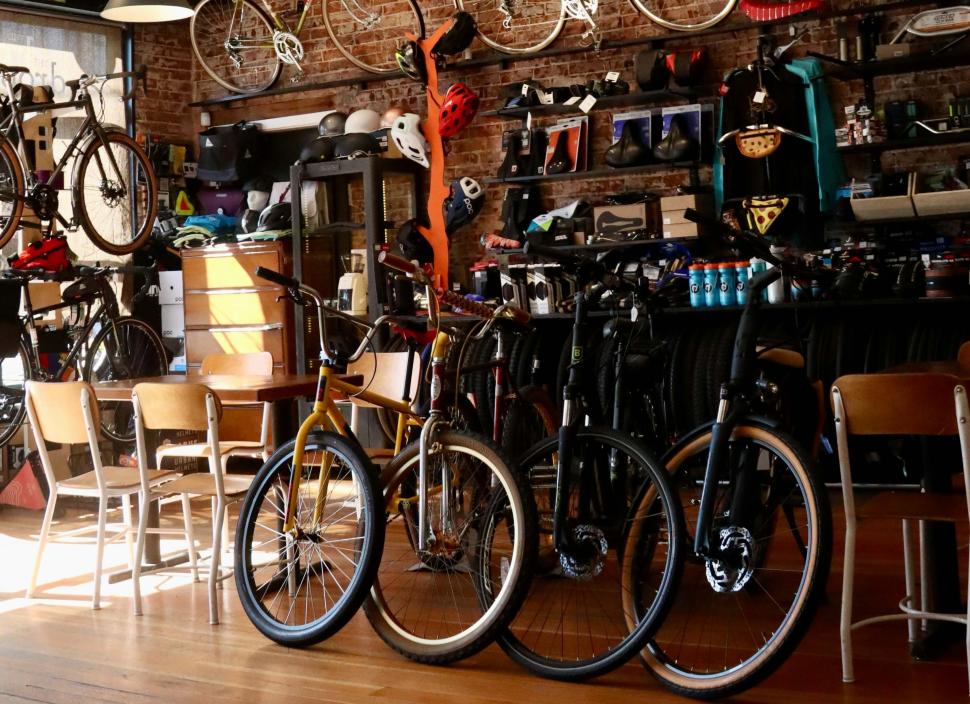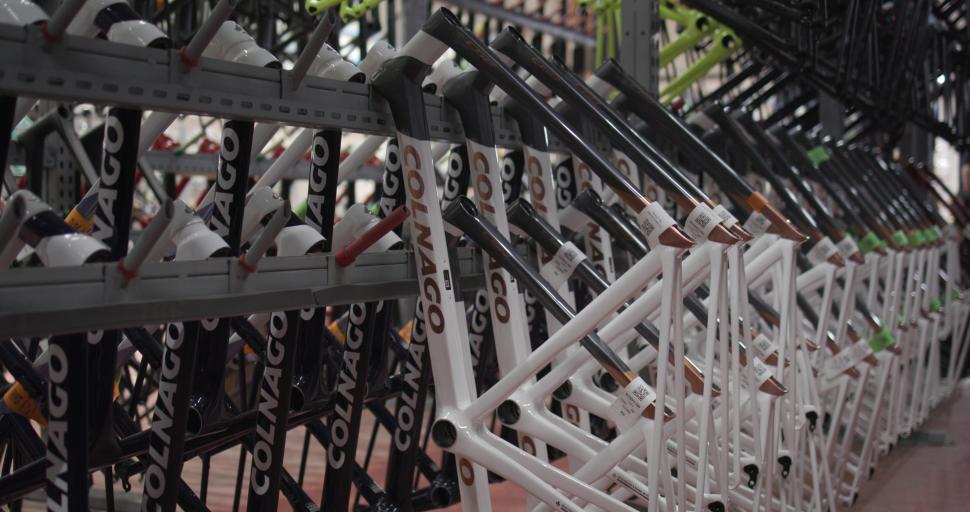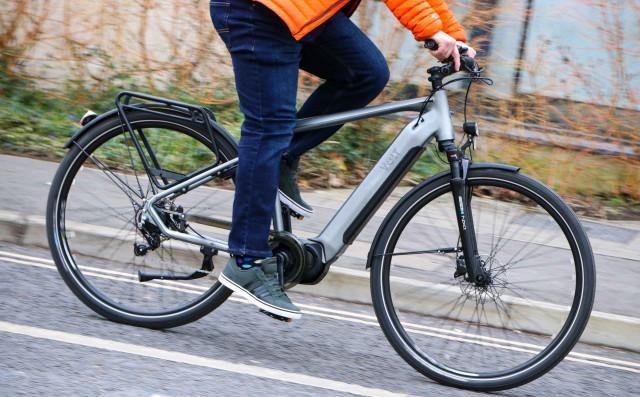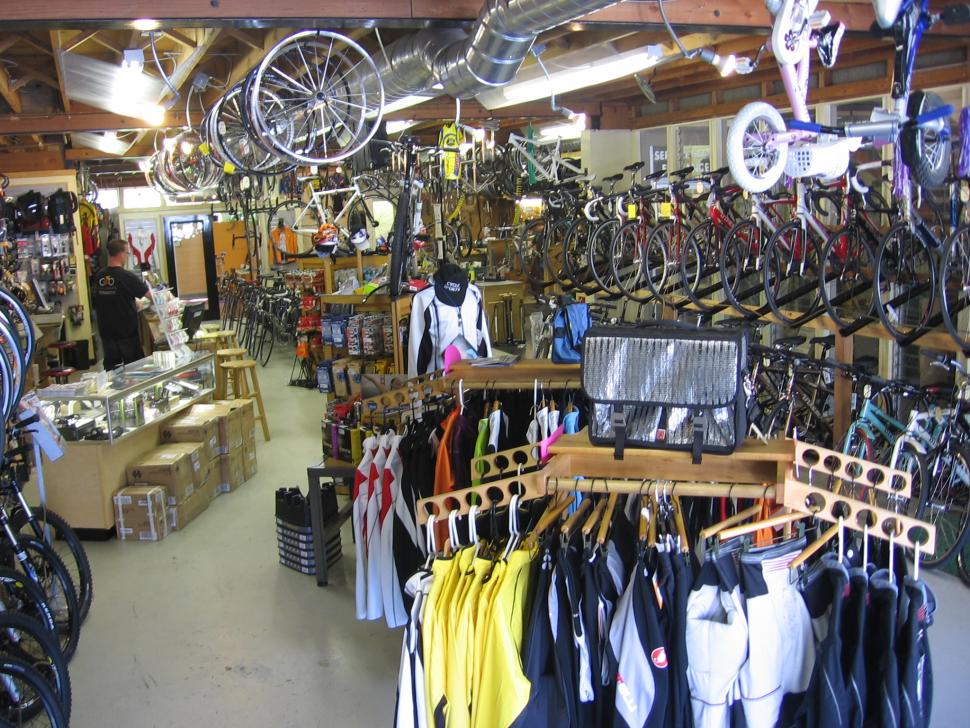- News
- Reviews
- Bikes
- Accessories
- Accessories - misc
- Computer mounts
- Bags
- Bar ends
- Bike bags & cases
- Bottle cages
- Bottles
- Cameras
- Car racks
- Child seats
- Computers
- Glasses
- GPS units
- Helmets
- Lights - front
- Lights - rear
- Lights - sets
- Locks
- Mirrors
- Mudguards
- Racks
- Pumps & CO2 inflators
- Puncture kits
- Reflectives
- Smart watches
- Stands and racks
- Trailers
- Clothing
- Components
- Bar tape & grips
- Bottom brackets
- Brake & gear cables
- Brake & STI levers
- Brake pads & spares
- Brakes
- Cassettes & freewheels
- Chains
- Chainsets & chainrings
- Derailleurs - front
- Derailleurs - rear
- Forks
- Gear levers & shifters
- Groupsets
- Handlebars & extensions
- Headsets
- Hubs
- Inner tubes
- Pedals
- Quick releases & skewers
- Saddles
- Seatposts
- Stems
- Wheels
- Tyres
- Health, fitness and nutrition
- Tools and workshop
- Miscellaneous
- Cross country mountain bikes
- Tubeless valves
- Buyers Guides
- Features
- Forum
- Recommends
- Podcast
news
 Bike shop (Credit: Manny Becerra via Unsplash)
Bike shop (Credit: Manny Becerra via Unsplash)Bike industry “ripe” for smart investment ahead of “significant” recovery from 2026, focusing on strong branding, e-bikes, and manufacturing a “higher share of the bike”, new research claims
The cycling industry is “ripe” for smart investment, and a renewed wave of merger and acquisition (M&A) deals, as it looks ahead to a profitable 2025 and “significant” medium to long-term growth, a new report has argued.
This latest research, conducted by global investment bank Houlihan Lokey and consultancy Kearney, and published to coincide with this year’s Eurobike, was based on interviews with 40 industry executives and financial investors and aimed to explore “potential future trends in the bike industry and what might be ahead for investors”.
Based on these findings, which examined the role of e-bikes, branding, and the potential for manufacturers to expand their role in the entire supply chain as a basis for recovery and increased investment, the report forecasts “a gradual recovery with significant upside in the medium to long term, with 2026 and 2027 marking pivotal years for increased M&A activity and investment opportunities.”
It continued: “As such, smart investors will start the search for promising targets now, to be in prime position when the market bounces back.”
Assessing the role of M&A deals as a marker of the strength of the global bike market, the report found that 96 such deals – an all-time high – were completed in 2022, when the ‘boom’ effects of the Covid-19 pandemic were still apparent.
However, the following year, the number of deals dropped to 66, as interest from investors in the cycle industry collapsed due to the drop in demand, overstock issues, and global uncertainty that dominated the post-pandemic period.
Nevertheless, with the market beginning to gradually recover, the report detailed several key factors which Houlihan Lokey believes will define the bike industry’s future and prove critical for future investment and “prosperity”.
Arguing that there is a “clear path to market recovery”, the report said: “With inventory levels slowly starting to normalise, dealers and bike brands are expected to go into the 2025 season with a more balanced working capital position. Although still high, discount levels are expected to gradually balance out, lifting margins significantly over time.
“In fact, 68 per cent of bike executives have positive profitability expectations in the medium term, citing healthy inventory levels and industry consolidation as key drivers for a return to healthy profitability levels.”
“At the moment, the main issue is bringing down the large stock levels currently in the market,” one executive told the researchers. “It will take until the end of the year until we are more or less on normal levels again.”
However, the report also notes that this recovery will be “characterised by value rather than volume”, with total units sold expected to remain flat in both Europe and North America. The market value across both regions will grow though by eight per cent, according to the report, reaching €38 billion by 2028, spurred on by the increasing popularity of e-bikes.
This rising popularity in e-bikes, especially in Europe, will prove key to boosting this market value, the report says, with the share of e-bikes in Europe expected to grow to 39 per cent by 2028. 88 per cent of those interviewed, meanwhile, agreed that a compelling e-bike portfolio will prove essential to remaining competitive in the future.
As bikes become more complex and expensive, the report also highlights that “strong brands will dominate”, especially those with increased investment in marketing and direct consumer engagement.
In fact, all of the experts and insiders surveyed agreed that brand strength will become increasingly significant over the next few years, with the report arguing that manufacturers who embrace branding well, through social media, apps, flagship stores, and their own retail outlets, will “gain advantage over the competition, which will support a gradual consolidation of market shares in the industry”.
Another key “differentiator” noted by the report is the ability for one brand to manufacture as much of the bike as possible.
“While traditionally, bike brands would design the frame and then select off-the-shelf components from a variety of suppliers, some have started to broaden their scope and engineer or collaborate on components, allowing them to add their own stamp via both design and functionality, further strengthen their brand positioning, and increase their share of the margin,” the report says.
“To name a few examples, Specialized is developing its own e-drivetrain, Scott is using its Syncros brand to equip many parts of the bike, and Stromer is collaborating with component suppliers on own-brand batteries, brakes, wheels, handlebars, and stems.”
69 per cent of those surveyed said that expanding their role in the supply chain and developing, engineering, or partially manufacturing components in-house will represent a key topic for their companies in the future.
“There is a lot of margin potential in reducing the bill of materials,” the Stromer executive told the researchers. “How many branded components do I really need to put on a bike to fulfil consumer desire? In many cases, the consumer doesn’t care; it just needs to be a good component.”
Increased professionalisation, improved planning, and data management are also making the industry more resilient to market swings, the report adds, with moves into retail through direct-to-consumer sales and franchise concepts creating opportunities for higher margins.
However, this move into retail, and away from the traditional relationship with independent bike dealers, has proved divisive within the industry.
While just over half (56 per cent) said that bike dealers will remain the most important sales channel in the future, more than 80 per cent of the industry insiders indicated that traditional bike brands will need to establish or expand direct-to-consumer channels or click and collect capabilities to remain competitive.
Finally, the report notes that “as the bike industry matures, firms are also derisking the supply chain by bringing manufacturing and service operations closer to home”.
“After a turbulent few years, the bike industry is set to stabilise and make a gradual recovery, with significant upside in the medium to long term,” the report concluded.
Reflecting on the factors it believes is key to securing future growth, Houlihan Lokey said: “When we consider these dynamics alongside the fact that financial investors will need to divest more mature assets within the next couple of years, it becomes increasingly clear that the bike market will see a corresponding rise in M&A activity starting in 2026 to 2027.
“As the market recovers and bike firms position themselves to exploit emerging trends and technologies, we expect wise investors to start identifying prime targets now.
“In our view, bike manufacturers that have strong branding, a convincing e-bike portfolio, premium price positioning, and a clear distribution strategy should be top of the list. By focusing on these strategic differentiators, investors will be well placed to act early and reap the rewards of an industry that has gone from boom to bust – and back again.”
After obtaining a PhD, lecturing, and hosting a history podcast at Queen’s University Belfast, Ryan joined road.cc in December 2021 and since then has kept the site’s readers and listeners informed and enthralled (well at least occasionally) on news, the live blog, and the road.cc Podcast. After boarding a wrong bus at the world championships and ruining a good pair of jeans at the cyclocross, he now serves as road.cc’s senior news writer. Before his foray into cycling journalism, he wallowed in the equally pitiless world of academia, where he wrote a book about Victorian politics and droned on about cycling and bikes to classes of bored students (while taking every chance he could get to talk about cycling in print or on the radio). He can be found riding his bike very slowly around the narrow, scenic country lanes of Co. Down.




This is awful but I'm pretty sure they were riding surrons (electric motorbikes) not bicycles.
I got knocked off by a driver with 30points. I can't really blame the driver, he was just acting to form, totally foreseeable therefore not an...
He has done horribly wrong no doubt about that but I had hoped that this website is above revenge-style moves like posting villains pictures. Thats...
Longwater junction is just nasty at the best of times. Road markings have vanished and it's a total free for all no mater what direction you are...
I can do the basics, but largely I prefer to take my bike to the LBS when it needs a service, when they check all the big things and sort them out...
Agree about the blue badge / double yellows ... as you say it's moot in practice....
There is a link to the 1 page manual which clearly shows how it is used.
Interesting, thanks Rendel
Twas ever thus.
Scrapping free car parks could frighten away shoppers ...